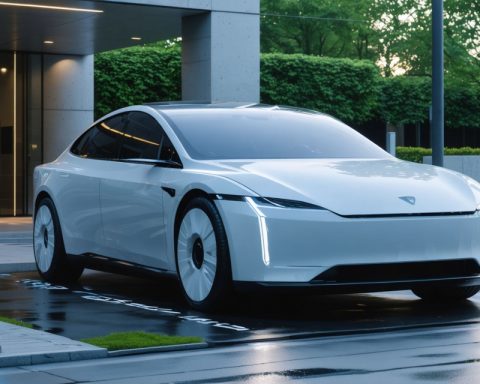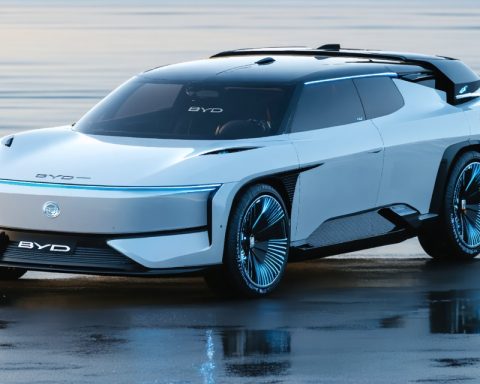- Clean hydrogen is emerging as a crucial component of the global sustainable energy transition, rivaling solar and wind power.
- It offers the potential to fuel diverse applications, from powering hydrogen trains in Europe to supporting steel production and long-haul trucking worldwide.
- Countries are increasingly investing in clean hydrogen as part of their strategy to reduce reliance on fossil fuels and meet climate goals.
- The development of a robust supply chain and reduction in production costs are critical challenges that need addressing to realize hydrogen’s full potential.
- With significant initial investments and technological innovations underway, clean hydrogen is poised to redefine the energy landscape, offering a cleaner, more sustainable future.
Behind the shimmering veil of the industrial landscape, a silent revolution brews—a transformation led by the elusive, colorless powerhouse: clean hydrogen. Often overshadowed by its louder renewable siblings, solar and wind, clean hydrogen quietly hums with potential, poised to redefine energy and industry.
This versatile element, once dismissed as too costly or elusive, is emerging as a cornerstone of the global transition to a sustainable future. Imagine the vast skies above Australia’s outback, where sunlight and wind marry harmoniously, creating a reservoir of hydrogen that fuels economies far beyond its shores. Or envision bustling European cities where hydrogen-powered trains glide smoothly, whispering of a future unshackled from carbon.
The global clean hydrogen market hums with activity, as countries pivot from fossil fuels under the weight of climate imperatives. The allure lies not just in its promise of sustainable energy, but in its potential to integrate seamlessly into existing infrastructure—from fuelling steel production to powering trucks on cross-country hauls.
However, beneath the glittering allure of opportunity lurk challenges. The path to a hydrogen-fueled world is marked by technological hurdles and whopping initial investments. Building a robust supply chain and overcoming the high production costs are urgent priorities for leaders and innovators worldwide.
Yet, the takeaway is crystal clear. Clean hydrogen isn’t just a part of the renewable energy tapestry; it’s a transformative promise that holds the power to redefine our energy paradigm, ensuring industries not only survive but thrive. As executives and leaders stake their claims in this burgeoning market, the charge is clear: move fearlessly toward a hydrogen-fueled future, beyond the whispers of hype, toward a tangible, greener horizon.
The Clean Hydrogen Revolution: Is It Really the Future of Energy?
Understanding Clean Hydrogen: The Future of a Sustainable World
Clean hydrogen, a burgeoning force in the renewable energy sector, offers a promising and sustainable alternative to traditional fossil fuels. Often overshadowed by solar and wind energy, clean hydrogen is quickly gaining recognition for its versatility and potential to revolutionize numerous industries.
How-To Steps & Life Hacks for Clean Hydrogen Integration
1. Identify Potential Applications: Evaluate sectors where hydrogen can reduce emissions, such as transportation, heavy industry, and energy storage.
2. Invest in Technology: Support R&D in hydrogen production and fuel cell technology to improve efficiency and lower costs.
3. Partner with Innovators: Collaborate with startups and established players in the hydrogen space to leverage groundbreaking technologies.
4. Policy Advocacy: Engage with policymakers to build a supportive regulatory framework that incentivizes clean hydrogen adoption.
Real-World Use Cases
– Transportation: Hydrogen-powered fuel cell vehicles (FCEVs) offer a clean alternative for long-haul trucking and public transportation, reducing reliance on diesel.
– Industry: Hydrogen is crucial in decarbonizing industrial processes like steel and ammonia production, which are currently highly carbon-intensive.
– Energy Storage: Store excess renewable energy during peak production and use hydrogen as a stable energy source when the sun doesn’t shine, and the wind doesn’t blow.
Market Forecasts & Industry Trends
The clean hydrogen market is projected to grow exponentially, with some estimates predicting a market value exceeding $200 billion by 2030 (Iea). A primary driver is the global shift toward zero-carbon targets and the increasing affordability of hydrogen production technologies, particularly electrolysis.
Reviews & Comparisons
Pros:
– Zero emissions when used as a fuel.
– High energy density compared to other renewable energies.
– Expansive applications across various industries.
Cons:
– High initial production and infrastructure costs.
– Storage and transportation challenges.
– Efficiency loss in energy conversion processes.
Controversies & Limitations
Despite its potential, clean hydrogen faces several controversies, primarily related to its production methods. Steam Methane Reforming (SMR), a common production method, releases significant CO2 emissions unless paired with carbon capture technology. Conversely, electrolysis is clean but costly due to the high electricity demand.
Security & Sustainability
Security in hydrogen deployment focuses on robust infrastructure to prevent leaks or accidents. Sustainability hinges on reducing costs through technological advancements and scaling up production to meet increasing demand without adverse ecological impacts.
Insights & Predictions
Experts suggest that the widespread adoption of hydrogen will depend significantly on technological breakthroughs in production and storage and strategic partnerships between governments and industries.
Actionable Recommendations
– Invest in Research: Encourage funding in electrolysis and carbon capture technologies to drive down costs.
– Support Infrastructure Development: Build hydrogen refueling stations and pipelines to facilitate market expansion.
– Educate the Public: Communicate the environmental benefits of clean hydrogen to garner public and governmental support.
Conclusion
Clean hydrogen stands at the forefront of the global movement towards a green future, offering a viable solution to achieve zero-emission goals. As technologies evolve and economies of scale lower costs, hydrogen’s role as a fundamental component of energy strategies will only grow stronger. Becoming an early adopter and advocate can lead to significant environmental and economic gains.
For more insights and to stay updated on the latest in hydrogen technology and market trends, visit Energy.gov.














